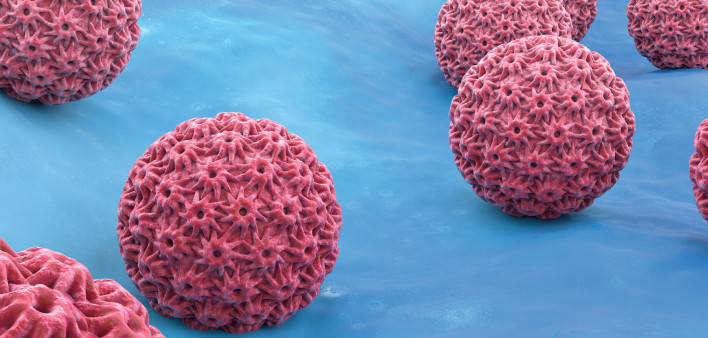Human papillomavirus (HPV) is the most common viral sexually transmitted infection in the United States. While most of the more than 100 types of HPV don’t cause symptoms, some can lead to serious problems, including several types of cancer. Fortunately, an effective vaccine can prevent HPV infection and its complications.
HPV lives in epithelial cells on the surface of skin and mucous membranes, most often affecting the cervix, genitals, anus or mouth and throat. It is easily transmitted via sexual contact, and a majority of sexually active people have had one or more types of HPV at some point. In many cases, the immune system can successfully fight the virus and clear the infection.
Some types of HPV trigger abnormal cell growth. HPV types 6 and 11, for example, cause genital or anal warts. High-risk, or oncogenic, HPV types—especially types 16 and 18—can cause abnormal cell changes that may progress to cervical, anal, oral, penile or vulvar cancer. At different stages, abnormal cells may be called dysplasia, low-grade or high-grade squamous intraepithelial lesions or cervical or anal intraepithelial neoplasia.
While HPV is common in the general population, people living with HIV are more likely to acquire HPV, more likely to carry multiple HPV types, less likely to naturally clear the virus and more prone to develop dysplasia or cancer. Invasive cervical cancer is included in the definition of AIDS, but anal cancer is not.
Prevention and Treatment
Condoms can reduce HPV transmission, but they provide only limited protection. The best protection is the HPV vaccine. The current Gardasil 9 vaccine protects against nine types of HPV (6, 11, 16, 18, 31, 33, 45, 52 and 58). The vaccine is recommended for both girls and boys ages 9 to 12, with catch-up vaccination through age 26. But some older people can still benefit, and the Food and Drug Administration has approved Gardasil 9 for those up to age 45.
Dysplasia is usually diagnosed with a Pap smear. This involves removing a sample of cells and examining them under a microscope for abnormalities. An HPV DNA test may also be done to detect cancer-causing types. Regular Pap smears and HPV tests are recommended for women, trans men and other people with a cervix. Anal Pap smears and HPV tests are still not routinely done, but the ANCHOR study showed that screening and early treatment can reduce the risk of anal cancer in people living with HIV.
There is currently no specific antiviral therapy for HPV infection, so treatment focuses on managing dysplasia and preventing progression to cancer. In some cases, dysplasia resolves on its own, but this is less likely for people with HIV. If a Pap test shows dysplasia, the next step is colposcopy or anoscopy, in which a doctor examines the cervix or anus using a lighted magnifying instrument.
A variety of treatments are available to remove or destroy abnormal cell growth, including medicated gels or creams, freezing lesions (cryotherapy), burning off lesions using electricity (electrocautery), infrared light or lasers, and minor surgery. The effectiveness and side effects of these treatments can vary widely. Some methods cause more discomfort, some require multiple administrations and some require more recovery time.
Once dysplasia or neoplasia has progressed to cancer, more aggressive treatment may be needed. This can include surgery, radiation, chemotherapy, targeted therapy medications or immunotherapy. Ask your doctor whether you might be eligible for clinical trials of new treatments.
People with sexually transmitted infections often experience shame or stigma, which can discourage seeking care. But regular HPV screening and prompt treatment of dysplasia can prevent progression to cancer that is harder to treat.







Comments
Comments